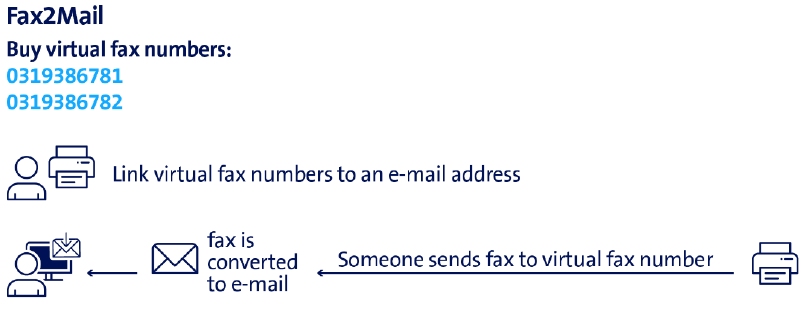The digital fax allows faxes to be sent and received via EPFL’s electronic messaging system. Faxes, sent as e-mails, are retrieved by a fax server and transformed into conventional faxes before being sent to the recipient.
The use of faxes has now become obsolete in most companies. Therefore, EPFL has decided to not renew its internal infrastructure from December 22, 2023.
For those who still have a need, the school offers a replacement solution with Swisscom Fax2Mail service, which enables digital faxes to be sent without any specific configuration. Fax reception requirements can also be accommodated on request.
Anyone with an email @epfl.ch, can send a FAX.
- Prepare a PDF file with the document to be faxed
- Send the PDF as an e-mail attachment using the following format for the recipient:
+ fax_number @mail2fax.swisscom.com

The system will send you a confirmation message within 10 minutes.
On justified request, we can provide you with a FAX number for receiving documents.

Your requests will be processed through ServiceNow
The first commercially viable fax machine was introduced in 1964 by the Xerox company, under the name “LDX” (Long Distance Xerography); but didn’t really start to become popular until the 1980s, when faster, more affordable fax machines were introduced to the market by companies such as Canon, Ricoh and Panasonic.
In 1980, the International Telephone and Telegraph Consultative Committee (CCITT), now known as the International Telecommunication Union (ITU), validated the Group 3 standard, the most commonly used for fax transmission, and in 1984 published the Group 4 standard, which enables faster, more efficient transmission.
During the 90s, the popularity of the fax continued to grow, particularly in industries such as healthcare and law, where documents requiring a signature or proof of receipt were commonplace. However, the arrival of the Internet and e-mail technology began to threaten fax’s relevance. Online fax services began to be offered, enabling documents to be faxed directly from a computer or smartphone.
In the early 2000s, faxing began to be seen as an obsolete technology by some, and many users turned to e-mail for communication. However, fax remained relevant in certain sectors, such as healthcare and law, where confidentiality and security standards required document transmissions to be both fast and secure. Online fax services became more sophisticated, offering features such as optical character recognition (OCR) to convert documents into editable text.
Although fax continued to be used in specific industries, from the 2010s onwards, e-mail became the preferred means of communication for users.
In the early 2000s, faxing began to be seen as an obsolete technology by some, and many users turned to e-mail for communication. However, fax remained relevant in certain sectors, such as healthcare and law, where confidentiality and security standards required document transmissions to be both fast and secure. Online fax services became more sophisticated, offering features such as optical character recognition (OCR) to convert documents into editable text.
Although fax continued to be used in specific industries, from the 2010s onwards, e-mail became the preferred means of communication for users.